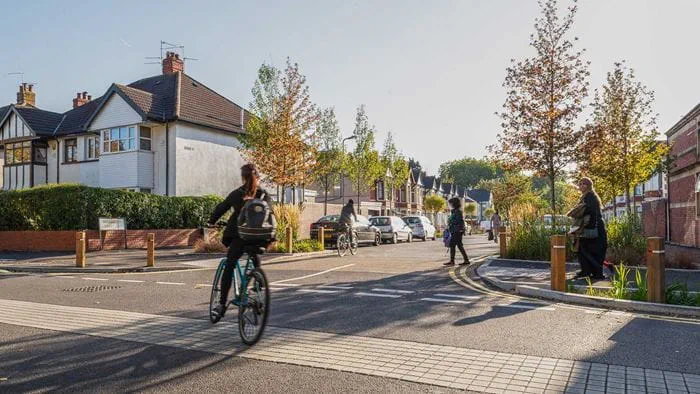In Semarang, Indonesia, where rapid urbanisation has led to an unsustainable dependency on cars, city leaders are focussed on creating efficient and affordable public transport, as well as cycling and walking networks.
We collaborated on a participatory planning project with Kota Kita which explores how the city can create a more sustainable transport network that would reduce carbon emissions and improve accessibility for women and marginalised groups.
The UK PACT programme (Partnering for Accelerated Climate Transitions) supports countries to overcome barriers to clean growth and to accelerate their climate change agendas. This project, under UK PACT Future Cities Programme, partners with the Indonesia Ministry of Transportation and city governments to promote public transport and active travel.
The research project focussed on the experiences of vulnerable communities in Semarang and proposed ideas for how to enhance accessibility for communities across the city.
A demonstration project, a walk along a designated route in Kota Lama, tested interventions such as wayfinding and crossing improvements. This project contributed to Semarang City efforts towards revitalising the historical area.
This demonstration saw firsthand how improvements created immediate tangible impacts to enable inclusive public transport for all participants.
What we delivered
-
This project focussed on the experiences of vulnerable communities and proposed ideas for how to increase public transport accessibility.
-
We held a demonstration project to test interventions such as wayfinding and crossing improvements.
-
This programme strengthens UK-Indonesia climate initiatives and explores new areas for collaboration on reducing emissions.
Transport consulting
Our teams deployed extensive stakeholder consultation, data analytics and vulnerability assessments to understand the lived experience of women and marginalised groups in accessing public and active transport facilities in Semarang and Makassar.
The voices of vulnerable groups are often unheard during the planning process and transport systems do not sufficiently address their needs, leading to high reliance on private vehicles or very limited mobility. There are various mobility patterns that are unique to people with different abilities and vulnerabilities. Including vulnerable groups in the planning process is essential to ensure the city’s infrastructure design meets the needs of all.
Starting with Semarang, our team engaged stakeholders including Indonesia’s Ministry of Transportation, city governments and impacted communities and conducted vulnerability assessments to understand the day-to-day mobility challenges experienced by women and vulnerable groups and the needs to accommodate that to ensure everyone has equitable access to transportation and safe urban environment.
The objective is to design safety improvements to increase the use of public transport and enhance Gender Equality and Social Inclusion (GESI) in the approach through participatory planning and tactical urbanism demonstration projects which will then be developed into a subnational framework for inclusive low-carbon transport.
“Inclusive urban planning, collaborating with women and vulnerable groups, creates better outcomes for all and can generate broader social, economic, and environmental benefits. ”
Safiah Moore Cities, Planning and Design Leader, Indonesia
Accessible and inclusive environments
Kota Lama, a popular heritage area in the city, was agreed upon as the demonstration area. The demonstration project focused on providing inclusive signage system for better wayfinding and pedestrian crossing improvements, which were discussed and determined from the activities and workshops conducted in Semarang.
The interventions are located along the designated walking route from Tawang Bank Jateng Train Station to the heart of Kota Lama, at 12 strategic points. They are designed to improve accessibility and navigation for all, particularly vulnerable groups.
We engaged local tour guide and art communities to collaborate with us in the walking tour design. Participants of the demonstration project workshop and walking tour were women and vulnerable groups, government representatives, as well as potential funders. They experienced the transformation firsthand, shared their feedback, and discussed the potential for replication and scaling up across Kota Lama. This will require strong collaboration between the government, communities, academia, and the private sector to develop safer, more inclusive and more convenient public environment in Kota Lama and across the city.
The project establishes gender equity and safety in design as priority through inclusive planning and integrated design approaches. Participatory methods such as photovoice and journey mapping exercises were used to complement conventional research methods and gain contextual insights from direct users.
Tactical urbanism (which refers to “a citizen-led approach to neighbourhood building using short-term, low-cost, and scalable interventions to catalyse long-term change” source) is used in demonstration projects, and even though the interventions are small-scale, they could directly lead to more permanent applications in the future.
 ;
;







